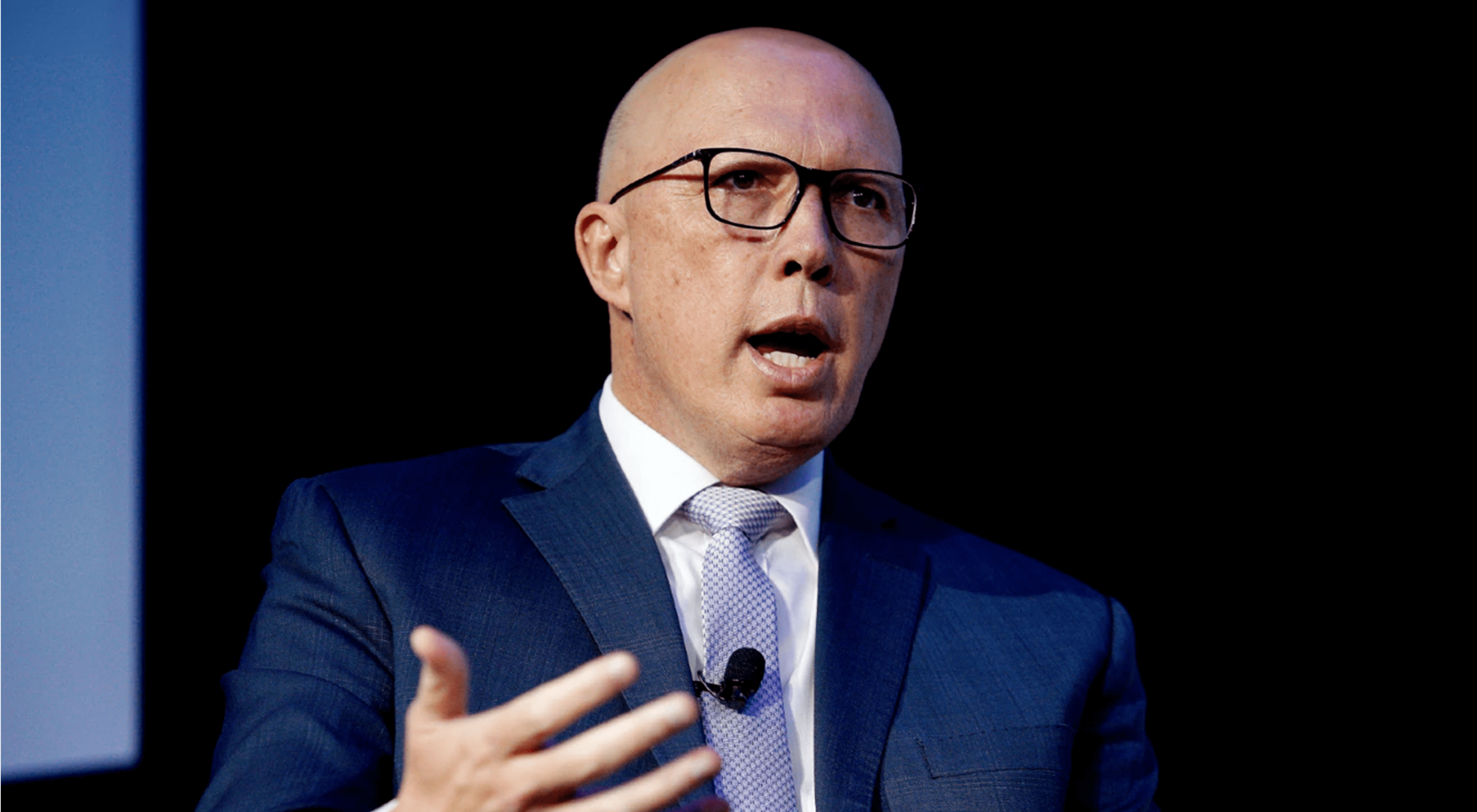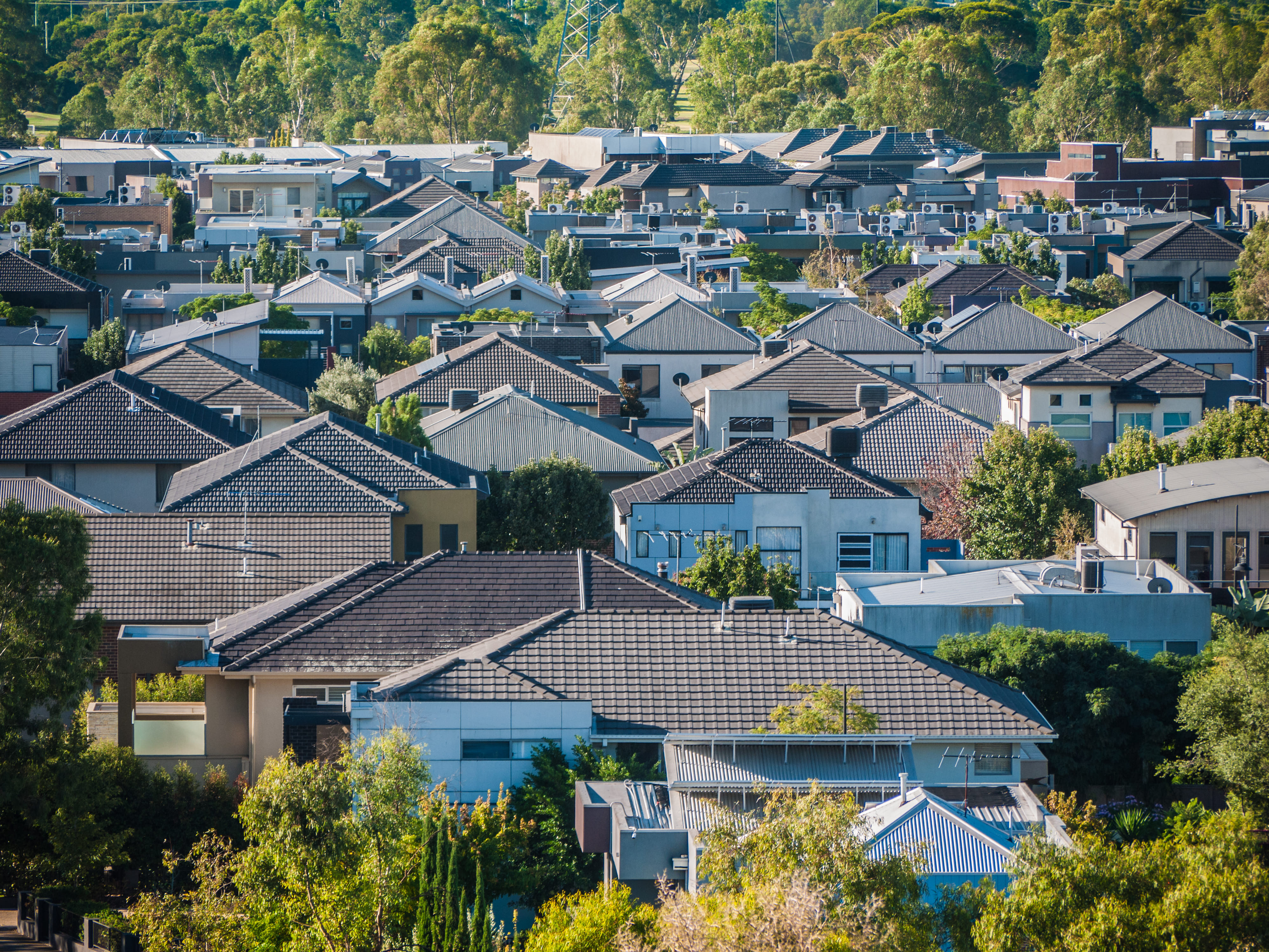
Image from skynews.com.au
KEY POINTS
- Peter Dutton has proposed temporarily slashing the permanent migration program in a bid to tackle the housing crisis
- The Opposition leader claims cutting the program from the currently planned annual rate of 185,000 to 140,000 would “free up” 40,000 homes in just one year
- Mr Dutton has also promised that he will cut the number of international students coming to Australia if the Coalition is elected at the next Federal election in a bid to free up rental properties
- The council, which represents student accommodation providers, says Mr Dutton is prepared to “tank” the $49 billion international education sector in return for freeing up only 4% of rental properties
It’s now clear that housing is going to be one of the critical policy battlegrounds in the upcoming Federal election, which could be held as early as this year.
Opposition leader Peter Dutton used his budget reply speech last Thursday night to unveil a number of policies the Coalition will pursue in the election, many of which revolve around alleviating the current housing crisis.
Key to his strategy is a rapid cut in Australia’s immigration intake.
While some commentators have described the plan as a descent into “ugly politics” where easy targets like migrants and international students are blamed for housing shortages, population pressures, and the high cost of living, it’s worth taking a serious look at what the alternative government is proposing.
The details
In his budget reply speech, Peter Dutton told parliament that “the great Australian aspiration of home ownership has become out of reach for so many.
“I will never accept a situation where the only people who can afford to buy a home are people with rich parents.”
Mr Dutton said the Coalition has recommitted to the policy it adopted before the last election, which would allow Australians to access up to $50,000 of their superannuation savings to buy their first home.
I’ve previously looked at the pros and cons of this policy here: Is it a good idea to be able to access your super to buy a house?
But Mr Dutton’s big new announcement centred around Australia’s migration strategy.
He pledged that a Coalition government would slash the permanent migration program by 25%—from 185,000 to 140,000 for two years.
It would then increase to 150,000 in the third year and 160,000 in the fourth.
There would also be a two-year ban on foreign investors and temporary residents purchasing existing homes in Australia.
The Opposition leader said these drastic moves would “free up” more than 40,000 homes in just one year and 100,000 over five years.
He did, however, pledge a Coalition government would “ensure there are enough skilled and temporary skilled visas for those with building and construction skills to support our local tradies to build the homes we need’.
The third plank of the Coalition's strategy is aimed at making more rental properties available to put downward pressure on rents.
Peter Dutton said he would reduce “excessive numbers of foreign students studying at metropolitan universities” and “relieve stress on rental markets in our major cities.”
He said he would work with universities to set a cap on foreign students.
“We need to prioritise Australians for existing homes”, Mr Dutton said, claiming the Albanese Government’s poor management of the migration program is causing “congestion on our roads and pressure on existing services which are stretched, like seeing a GP.”
_highres-1.jpg?width=2048&height=1368&name=APHA(MarnieHawson)_highres-1.jpg)
The reaction
Labor has dismissed Peter Dutton’s housing and other policy initiatives, with frontbencher Bill Shorten describing them as "a show bag of slogans and Band-Aids".
Mr Shorten said he had “checked the figures” after Mr Dutton’s budget reply speech. He discovered that the number of foreigners who had bought Australian properties over the past two years was less than 5,000.
“Missed the point”, was the reaction from Australian Chamber of Commerce and Industry chief Andrew McKellar.
“All of the growth in net overseas migration numbers has been effectively coming through the temporary visa streams,” he said, “That’s where the pressure is.”
Migration experts have pointed out that more than half of permanent migration applicants are people who are already in Australia and occupy housing.
They arrived here on temporary visas and are seeking to stay.
Labor says a cut to the program would result in fewer midwives, engineers, accountants and teachers settling in Australia.
Torie Brown, the Executive Director of the Student Accommodation Council, said international students had been unfairly blamed for the rental crisis. The opposition’s plan to slash numbers would “tank the international education sector—worth $49 billion annually and is Australia’s largest service export.”
She cited figures from a recent report by her organisation that showed international students make up just 4% of the rental market Australia-wide.
The report also claimed that people who come to Australia to study prefer to live in student accommodation and apartments in CBDs—not in suburban-style family homes sought after by the average Australian renter.
“If we remove international students from our CBDs, we will have a lot of empty student accommodation buildings and a lot of struggling small businesses, but we won’t be adding a large number of rental homes back into the market for Australian families,” Ms Brown said.
Master Builders Australia and the Property Council of Australia were more measured in their responses. They focused on the Opposition’s pledge to encourage temporary and permanent migrants with building skills to settle in Australia.
However, the Property Council’s CEO, Mike Zorbas, pointed out that “the stark reality is that only 1.8% of migrants coming into the country over the past twenty years have arrived with the construction skills we desperately need.”

The take-out
Undoubtedly, Australia’s net overseas migration intake has been high recently.
It was 528,000 in 2022-23, and predictions are that it will decline to 395,000 this financial year before tapering to 260,000 in the coming financial year.
About 50% of that record number in 2022-23 were international students; the overwhelming majority will eventually complete their studies and leave Australia.
The Australian Financial Review has also pointed out that since COVID-19 restrictions were eased, there’s been a significant increase in arrivals from working holidaymakers.
This temporary workforce is essential in rural and regional areas, where participants pick fruit and vegetables, work on farms, and take on many hospitality and low-paid jobs that would otherwise go unfilled.
The government intends to cap the permanent migration program to 185,000 places in 2024-25.
This is what Peter Dutton wants to slash by 25% to 140,000.
But of those 185,000 places, the government was planning to allocate 132,200 to skilled migrants to, in its words, “help address Australia’s long-term skill needs.”
By definition, if you cut the permanent migration program, you also cut the number of skilled migrants coming to or staying in this country, which will cause more problems for businesses already having difficulties finding skilled staff.
Labor points out that would mean fewer midwives, engineers, accountants and teachers settling here.
The Opposition’s claim of “freeing up” 40,000 homes in one year is highly optimistic—not to mention the fact that a glut of homes for sale could lead to a fall in property prices—which could see a lot of angry voters.
Slashing migration will also have repercussions across the economy.
The budget shows that economic growth will be pretty weak—1.75% this year and 2.25% next year.
Cutting the migration intake even more than is already planned could see the economy tip over into recession, sending many businesses to the wall and putting more people into the unemployment queue.
It could be particularly disastrous for the building industry—already under pressure from higher costs and falling margins.
There’s not a lot of point having extra homes available to buy or rent if the people that wanted to buy or rent them no longer have a job.
Stay Up to Date
with the Latest Australian Property News, Insights & Education.




.png?width=292&height=292&name=Copy%20Link%20(1).png)
 SIGN UP FOR FREE NEWSLETTER
SIGN UP FOR FREE NEWSLETTER








.jpg?width=1920&height=1080&name=Warning%2c%20You%20Might%20Be%20Facing%20Higher%20Taxes%20Soon%20(1).jpg)





.png?width=1920&height=1080&name=Rate%20Drops%20Signal%20BIGGEST%20Property%20Boom%20in%20DECADES%20(1).png)

.jpg?width=1920&height=1080&name=Labor%20vs%20Liberal%20These%20Housing%20Policies%20Could%20Change%20the%20Property%20Market%20Forever%20(1).jpg)
.jpg?width=1920&height=1080&name=QLD%20Slashes%20Stamp%20Duty%20Big%20News%20for%20Investors%20%26%20Home%20Buyers%20(1).jpg)
.jpg?width=1920&height=1080&name=Trump%20Just%20Slapped%20Tariffs%20%E2%80%93%20Here%E2%80%99s%20What%20It%20Means%20for%20Australia%20(1).jpg)
.jpg?width=1920&height=1080&name=Federal%20Budget%202025%20More%20Debt%2c%20No%20Housing%20%E2%80%93%20Here%E2%80%99s%20What%20You%20Need%20to%20Know%20(1).jpg)
.jpg?width=1920&height=1080&name=Australias%20Housing%20Crisis%20is%20about%20to%20get%20MUCH%20Worse%20(New%20Data%20Warns).jpg)
%20(1).jpg?width=1920&height=1080&name=Australias%20RENTAL%20CRISIS%20Hits%20ROCK%20BOTTOM!%20(2025%20Update)%20(1).jpg)
%20(1).png?width=1920&height=1080&name=Is%20Adelaide%20Still%20a%20Good%20Property%20Investment%20(2025%20UPDATE)%20(1).png)
.jpg?width=1920&height=1080&name=RBA%20Shocks%20with%20Rate%20Cuts!%20What%E2%80%99s%20Next%20for%20Property%20Investors%20(1).jpg)
%20(1).jpg?width=1920&height=1080&name=I%20Predict%20The%20Feb%20Rate%20Cut%20(My%20Price%20Growth%20Prediction)%20(1).jpg)
.png?width=1920&height=1080&name=Why%20Property%20Prices%20Will%20Rise%20in%202025%20Market%20Predictions%20(1).png)
.jpg?width=1920&height=1080&name=Why%20Investors%20Are%20Choosing%20Apartments%20Over%20Houses%202%20(1).jpg)
.jpg?width=1920&height=1080&name=Why%20Rate%20Cuts%20Will%20Trigger%20A%20Property%20Boom%20(1).jpg)
.jpg?width=1920&height=1080&name=Retire%20On%202Million%20With%20One%20Property%20(Using%20SMSF).jpg)
.jpg?width=1920&height=1080&name=4%20Reasons%20Why%20You%20Should%20Invest%20in%20Melbourne%20Now%20(1).jpg)
%20(1).jpg?width=1920&height=1080&name=Old%20Property%20vs%20New%20Property%20(Facts%20and%20Figures%20Revealed)%20(1).jpg)
%20(1).jpg?width=1920&height=1080&name=Will%20The%20New%20QLD%20Govt%20Create%20a%20Property%20Boom%20or%20Bust%20(My%20Prediction)%20(1).jpg)
%20Scott%20Kuru%20(1).jpg?width=1920&height=1080&name=Inflation%20Hits%20Three-Year%20Low%20(Will%20RBA%20Cut%20Rates%20Soon)%20Scott%20Kuru%20(1).jpg)
.jpg?width=1920&height=1080&name=How%20to%20Buy%20Investment%20Property%20Through%20SMSF_%20The%20Ultimate%20Guide%20(1).jpg)
.jpg?width=1920&height=1080&name=Victoria%20Slashes%20Stamp%20Duty%20Melbourne%20Set%20to%20Boom%20Scott%20Kuru%20(1).jpg)
.png?width=1571&height=861&name=Are%20Foreign%20Buyers%20Really%20Driving%20Up%20Australian%20Property%20Prices%20(1).png)
.jpg?width=1920&height=1080&name=The%20Single%20Factor%20That%20Predicts%20Property%20Growth%20Regions%20(1).jpg)
%20Scott%20Kuru%20(1).jpg?width=1920&height=1080&name=My%20Prediction%20On%20Rates%20%26%20Negative%20Gearing%20(Market%20Crash)%20Scott%20Kuru%20(1).jpg)

-1.png?width=1920&height=1080&name=Major%20Banks%20Cut%20Rates%20Will%20RBA%20Follow%20Suit%20(Sept%20Rate%20Update)-1.png)
%20Scott%20Kuru-1.png?width=1920&height=1080&name=Rate%20Cut%20Coming%20What%20New%20Zealands%20Move%20Means%20for%20Australia%20(Sept%20Prediction)%20Scott%20Kuru-1.png)
%20(1).jpg?width=1920&height=1080&name=Buy%20when%20the%20interest%20rates%20are%20high!%20(Why%20you%20must%20buy%20now!)%20(1).jpg)
.jpg?width=1920&height=1080&name=Carms_Revised%20Taxes%20Due%20Aug%209%20YT%20Thumbnail02%20(1).jpg)
.jpg?width=1920&height=1080&name=Carms_Too%20Little%20Too%20Late%20Aug%207%20YT%20Thumbnail01%20(1).jpg)









.jpg?width=1920&height=1080&name=Carms_Rate%20Drop%20In%20July%20Jun%2010%20YT%20Thumbnail02%20(1).jpg)
.jpg?width=1920&height=1080&name=Carms_Own%20a%20Property%20V6%20Jun%205_YT%20Thumbnail%20(1).jpg)









.png?width=1920&height=1080&name=Artboard%201%20(3).png)






.jpg?width=1920&height=1080&name=YT%20thumbnail%20%20(1).jpg)

